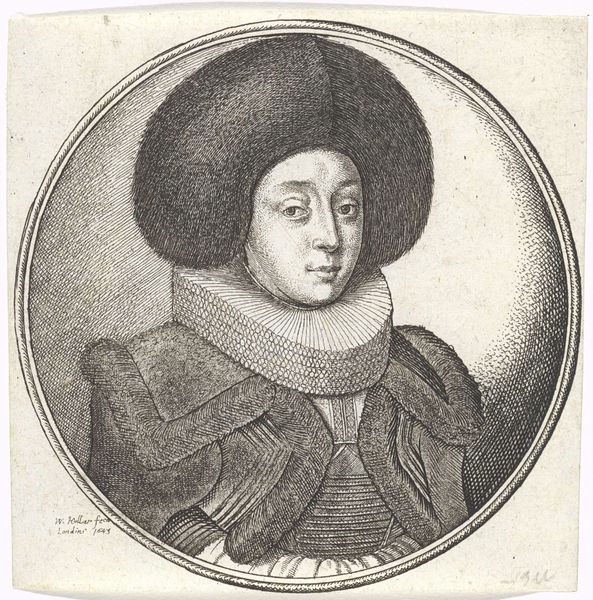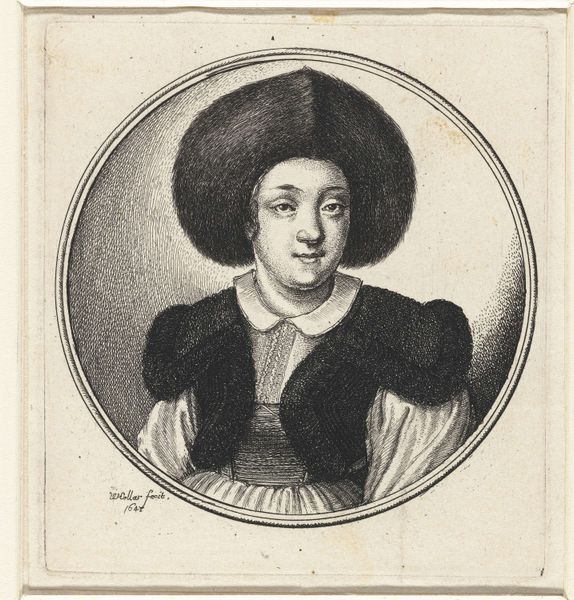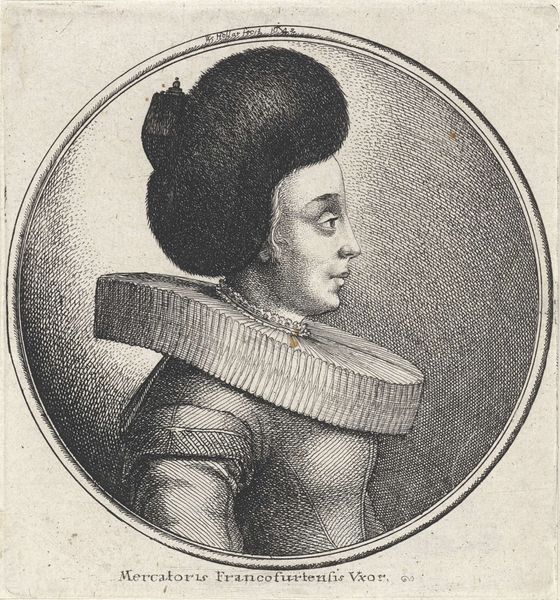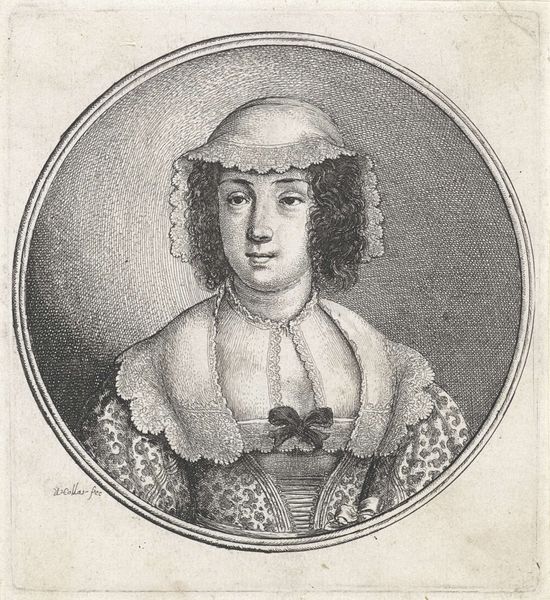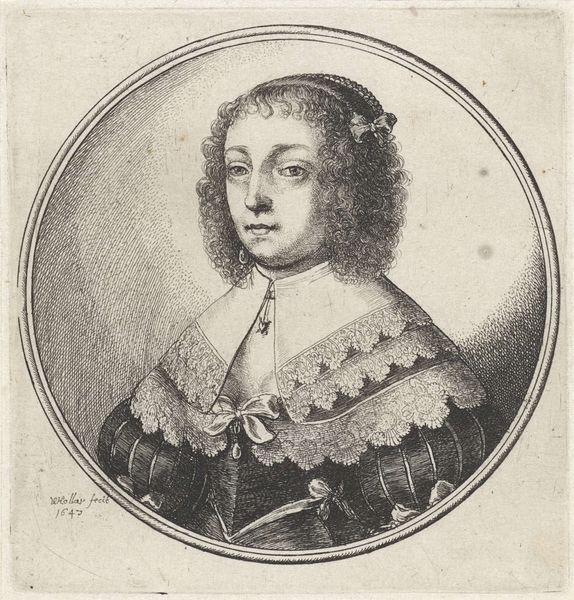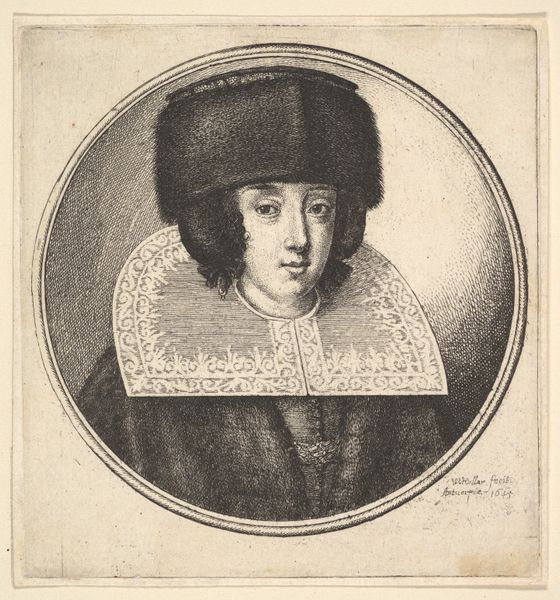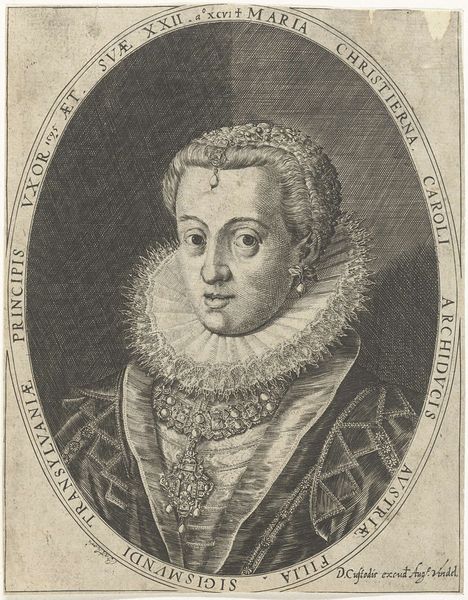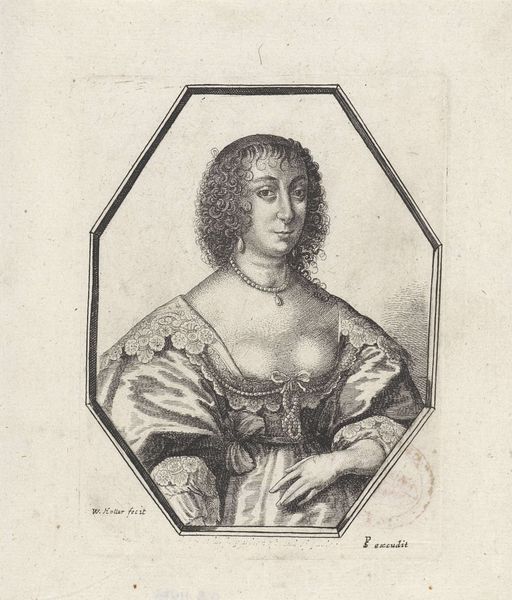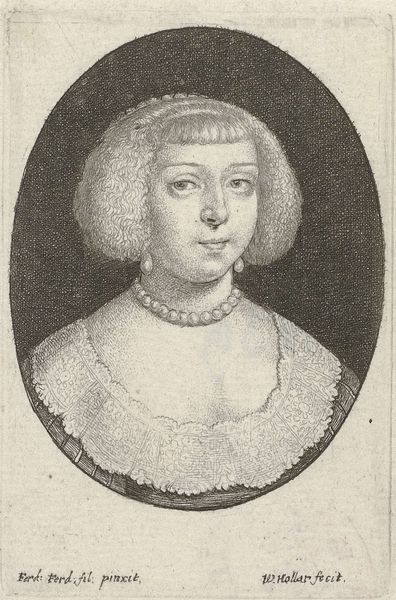
Woman with large circular fur hat and lace ruff 1645
0:00
0:00
drawing, print, engraving
#
portrait
#
drawing
#
baroque
# print
#
old engraving style
#
history-painting
#
engraving
Dimensions: Sheet: 3 9/16 × 3 9/16 in. (9.1 × 9.1 cm) cut to roundel with surface nicks into image
Copyright: Public Domain
Curator: This is "Woman with large circular fur hat and lace ruff," an engraving dating back to 1645, created by Wenceslaus Hollar. The work, a wonderful example of Baroque portraiture, now resides here at the Metropolitan Museum of Art. Editor: The sheer size of that fur hat is astounding! It's almost a halo, dwarfing the woman's face. There's a visual language here of status and almost cartoonish level of wealth. Curator: Exactly! These visual cues were very intentional. Hollar was operating in a context where images, particularly prints, were powerful tools for constructing and disseminating identities. This portrait, most likely commissioned, functioned as a kind of social advertisement. Editor: And what about the symbols beyond the obvious wealth display? That lace ruff, for instance, is incredibly detailed. Curator: Lace, during this period, held tremendous significance. It was expensive and complex to produce, signifying both refinement and status. Think of it as a visible demonstration of intricate social structures and economic power. It mirrors how art institutions operate. Editor: Right! And what of her almost unnaturally smooth skin, a blank canvas face contrasting so strikingly with the elaborate textures of fur and lace. What is she hoping to communicate? Curator: That's a question deeply rooted in Baroque aesthetics. Think about the public persona—what’s revealed versus what is strategically concealed. Hollar was active during tumultuous political periods; and portraits of wealthy noble families were created to portray continuity of family line during those uncertain times. Editor: I find it so interesting to realize that this portrait operates both as an aesthetic artifact and historical evidence. Symbols truly create unique windows into the past. Curator: Indeed, and with the help of dedicated museum spaces and curatorial decisions, our understanding of their power only becomes deeper through the centuries. Editor: Well, it certainly makes you wonder about the stories hidden beneath the fur and lace, and if only the portrait could reveal it’s story.
Comments
No comments
Be the first to comment and join the conversation on the ultimate creative platform.
